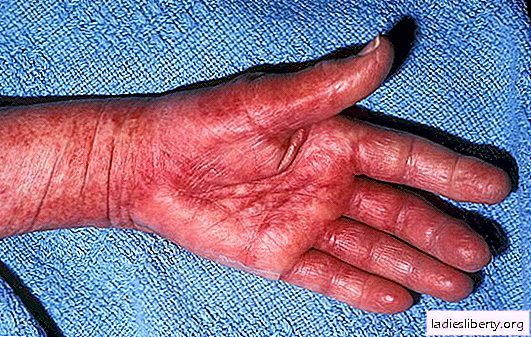
Amyloidosis is a complex of diseases that appear due to rather complex changes in the body characterized by deposits of amyloids (bad proteins) in the tissues.
This disease can cause damage to the skin, heart, liver, gastrointestinal tract and other tissues, and other organs.
Signs of Amyloidosis
Like the course of the disease, its symptoms can be very different and qualify from the place where amyloid deposition occurs. For example, with damage to the digestive tract, a person is disturbed by a violation of swallowing food and frequent burping.
With amyloidosis of the stomach after eating, a person has dyspeptic disorders and severity in epigastrium. Intestinal amyloidosis is often accompanied by the appearance of heaviness, pain in the abdomen, persistent constipation or indigestion.
There is also an isolated tumor-like lesion of the intestine with its obstruction and dull pain. It is noteworthy that it proceeds akin to a tumor, which, however, can only be detected during surgery.
Amyloidosis of the pancreas can occur, as well as chronic pancreatitis, which is accompanied by pain in the hypochondrium on the left, steatorrhea, diarrhea and dyspeptic manifestations.
In frequent cases, a person develops amyloidosis of the liver: the organ grows in size, seals appear in it and ascites (abdominal dropsy) occurs. The patient is concerned about pain in the hypochondrium on the right, splenomegaly, dyspepsia and jaundice.
Patients with amyloidosis at first may not notice a deterioration in overall health and the appearance of weakness, turning to a specialist only if there are obvious signs of ill health:
• swelling;
• severe weakness,
• hypertension;
• shortness of breath;
• stomach upset;
• renal failure;
• arrhythmia.
Amyloidosis is a systemic process that usually occurs as a result of rheumatic diseases. So, a rheumatologist specializes in their diagnosis and treatment. Since the disease, with untimely treatment, extends to other organs, other doctors can also join the patient’s treatment: for example, if a kidney disease is necessary, a nephrologist must be consulted, a hepatologist is involved in liver amyloidosis, and a gastroenterologist treats intestinal and stomach diseases.
Diagnostics
When diagnosing amyloidosis, it is very important to quickly determine which organs are affected: skin, heart, liver, spleen, kidneys, etc. In the case of the development of signs of secondary amyloidosis, it is necessary to determine which chronic disease caused the development of signs of amyoidosis.
For the diagnosis of the disease, the doctor prescribes functional tests, blood tests in the laboratory, but the most truthful diagnostic method is considered to be an organ biopsy that helps to detect the disease itself.
Amyloidosis treatment
Since the primary form of amyloidosis is difficult to detect, it is far from always possible to start adequate treatment on time. Therapy of a secondary disease will be effective only if changes in the affected organs are not critical.
For a successful cure, it is necessary to eliminate the cause of the disease, and also begin symptomatic treatment as soon as possible.
The doctor usually prescribes pathogenetic agents, among which hingamine and unitiol, which are used as injections, deserve special attention. Immunosuppressants are also often used, and in the treatment of symptoms, B vitamins, hepatoprotectors, cardiac glycosides, iron preparations, diuretics are prescribed. If necessary, perform a blood transfusion.
In the presence of complications, the patient must be hospitalized. Especially with renal or heart failure. But in most cases, therapy is done outside the hospital. The patient needs to limit the intake of protein foods (eggs, meat, fish) and salt.
The course of the disease is progressive. In the elderly, amyloid is severe.
Patients suffering from chronic renal failure can die in a year, and with heart disease they will live no more than four months.











